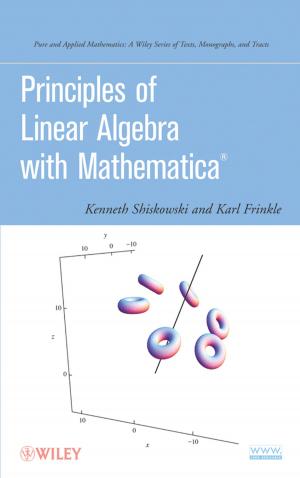Theory of Elasticity and Stress Concentration
Nonfiction, Science & Nature, Technology, Engineering, Mechanical| Author: | Yukitaka Murakami | ISBN: | 9781119274100 |
| Publisher: | Wiley | Publication: | September 16, 2016 |
| Imprint: | Wiley | Language: | English |
| Author: | Yukitaka Murakami |
| ISBN: | 9781119274100 |
| Publisher: | Wiley |
| Publication: | September 16, 2016 |
| Imprint: | Wiley |
| Language: | English |
Theory of Elasticity and Stress Concentration
Yukitaka Murakami, Kyushu University, Japan
A comprehensive guide to elasticity and stress concentration
Theory of Elasticity and Stress Concentration comprehensively covers elasticity and stress concentration and demonstrates how to apply the theory to practical engineering problems. The book presents a new approach to the topic without the need for complicated mathematics, and the principles and meaning of stress concentration are covered without reliance on numerical analysis.
The book consists of two parts: Part I - Theory of Elasticity and Part II - Stress Concentration. Part I treats the theory of elasticity from the viewpoint of helping the reader to comprehend the essence of it. Part II treats the principle and meaning of stress concentration and guides the reader to a better understanding of it. Throughout the book, many useful and interesting applications of the basic new way of thinking are presented and explained.
Key features:
- Unique approach to the topics.
- Encourages the readers to acquire the new way of thinking and engineering judgement.
- Includes examples, problems and solutions.
This book provides essential reading for researchers and practitioners in the structural and mechanical engineering industries.
Theory of Elasticity and Stress Concentration
Yukitaka Murakami, Kyushu University, Japan
A comprehensive guide to elasticity and stress concentration
Theory of Elasticity and Stress Concentration comprehensively covers elasticity and stress concentration and demonstrates how to apply the theory to practical engineering problems. The book presents a new approach to the topic without the need for complicated mathematics, and the principles and meaning of stress concentration are covered without reliance on numerical analysis.
The book consists of two parts: Part I - Theory of Elasticity and Part II - Stress Concentration. Part I treats the theory of elasticity from the viewpoint of helping the reader to comprehend the essence of it. Part II treats the principle and meaning of stress concentration and guides the reader to a better understanding of it. Throughout the book, many useful and interesting applications of the basic new way of thinking are presented and explained.
Key features:
- Unique approach to the topics.
- Encourages the readers to acquire the new way of thinking and engineering judgement.
- Includes examples, problems and solutions.
This book provides essential reading for researchers and practitioners in the structural and mechanical engineering industries.















